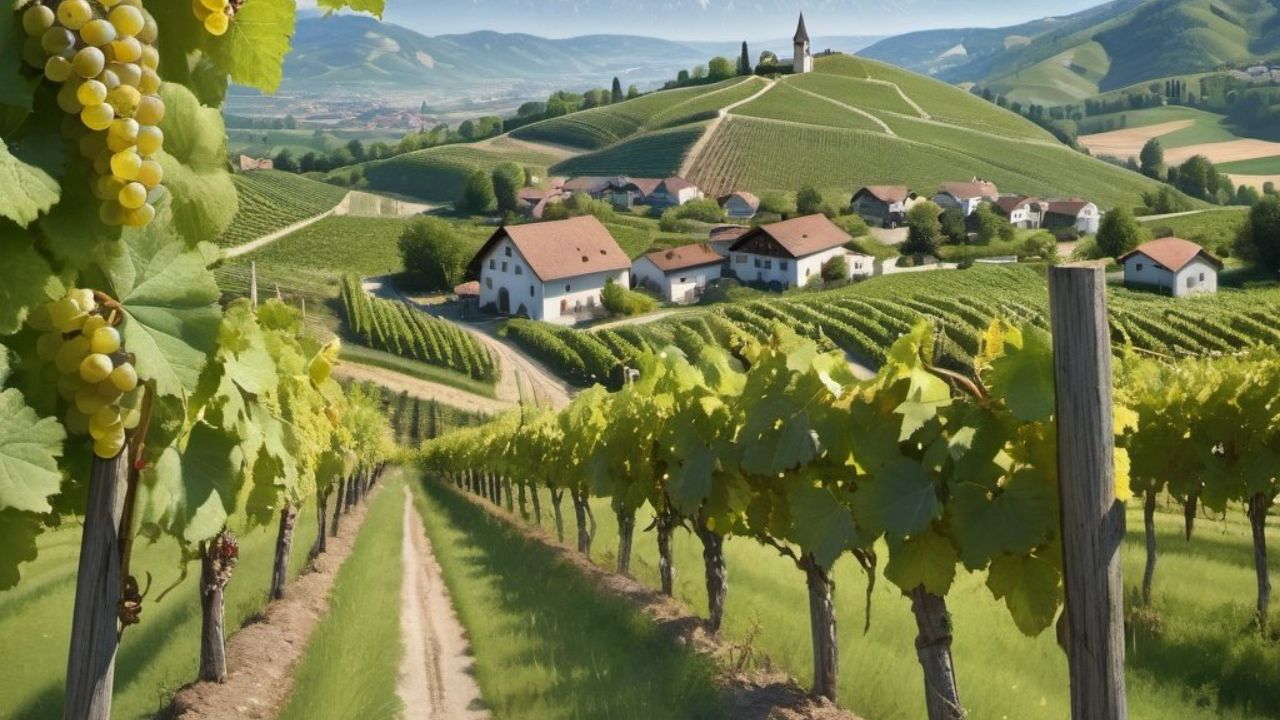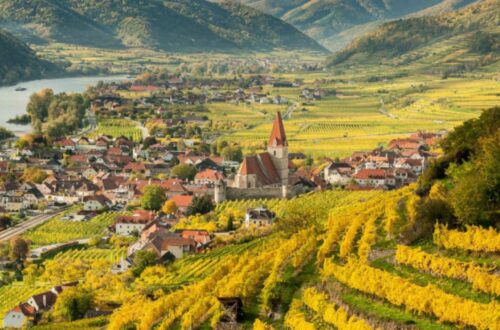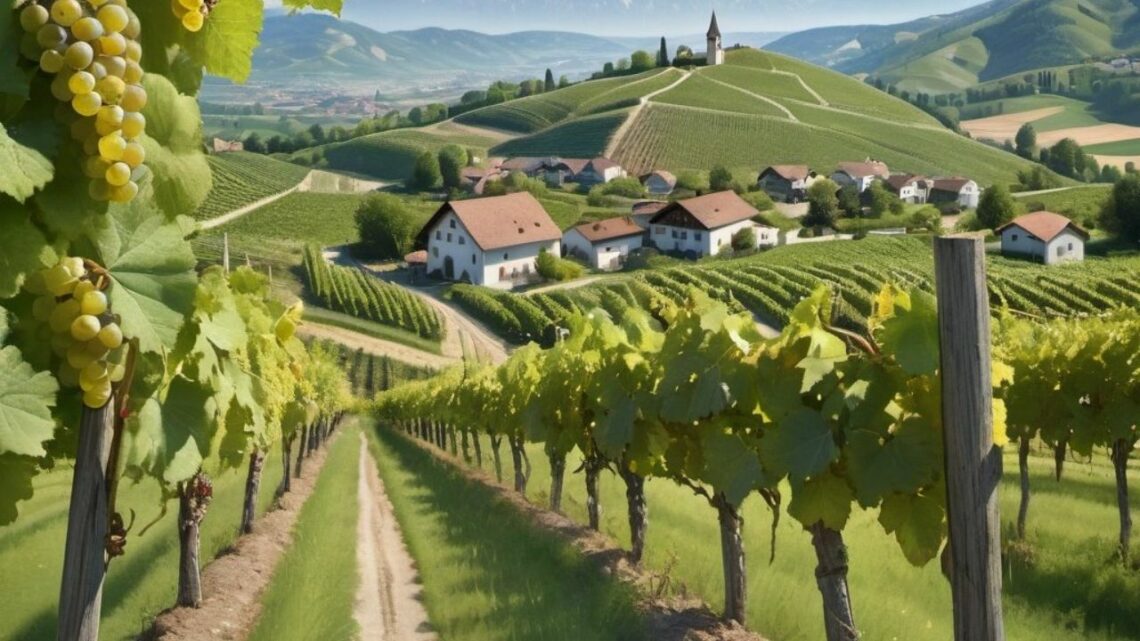
Cover Cropping In Austria
Hey you! Welcome back! If you’ve been following the lasts posts, you would have noticed I talk a lot about cover cropping.
So even if you now get the very general idea about what it is and why it’s good for for sustainable viticulture, I wanted to go more in depth today. And because, like I say and repeat all the time : it’s all about the soil! (well my favourite wines are anyway).
Cover cropping goes beyond planting sees, it really fosters a relationship between the vine and the rest of the world. These plants act as living groundcovers, especially during times when the fields are resting. And we all know that everything works best when in harmony.
Cover crops offer a range of benefits for Austrian vineyards. They prevent soil erosion from wind and rain, reducing the need for topsoil replacement. These plants also act as natural fertilizers, capturing nitrogen from the air and improving soil health. Additionally, cover crops suppress weeds and create habitat for beneficial insects, promoting pollination and natural pest control.
How Cover Crops Protect Your Wine
You probably already been in this situation: you’re taking a well-deserved break, but you still want someone to watch over your house! Cover cropping works the same way for vineyards.
When the vines are taking a rest between harvests, cover crops in vineyards step in protecting the soil and giving it a helping hand.
Nature’s Erosion Shield
Austria’s beautiful rolling hills and slopes can be vulnerable to erosion from wind and rain. This washes away precious topsoil, hurting future harvests and polluting rivers.
That’s where cover crops come in! They hold the soil together, stopping erosion in its tracks and keeping the soil healthy.
Growing Our Own Fertilizer
Healthy soil is the magic ingredient for delicious grapes. It needs nutrients, especially nitrogen, to thrive.
Traditionally, farmers use synthetic fertilizers to keep these levels up. But these can be bad for the environment and disrupt the natural balance in the soil.
Here’s where cover crops, especially legumes, become superstars! They have a special talent called nitrogen fixation. They capture nitrogen from the air and store it in the soil, acting like a natural fertilizer factory. This reduces the need for those chemical fertilizers, making winemaking more sustainable and eco-friendly.
Keeping Weeds at Bay – Naturally!
Weeds are like uninvited guests at a party :they steal water, sunlight, and nutrients from our precious vines. Farmers often use herbicides to get rid of them, but these chemicals can harm the environment and even helpful insects.
Cover crops are the ultimate weed-blockers! They create a thick living blanket that shades the soil and makes it hard for weeds to grow.
This not only reduces the need for herbicides but also keeps the vineyard healthy without harming the environment.
Building a Bug Buzz: Boosting Biodiversity
A healthy vineyard isn’t just about the grapes; it’s about a thriving ecosystem with all sorts of creatures working together.
Cover crops are the ideal location for helpful insects and pollinators like bees and butterflies. These busy bees ensure that the vines get pollinated, leading to more and better grapes.
Cover crops also attract good guys like ladybugs and lacewings. These helpful insects act as natural pest control, keeping harmful bugs away from the vines.
By encouraging biodiversity, cover crops help pollination, keep pests in check, and create a more sustainable future for delicious Austrian wines.
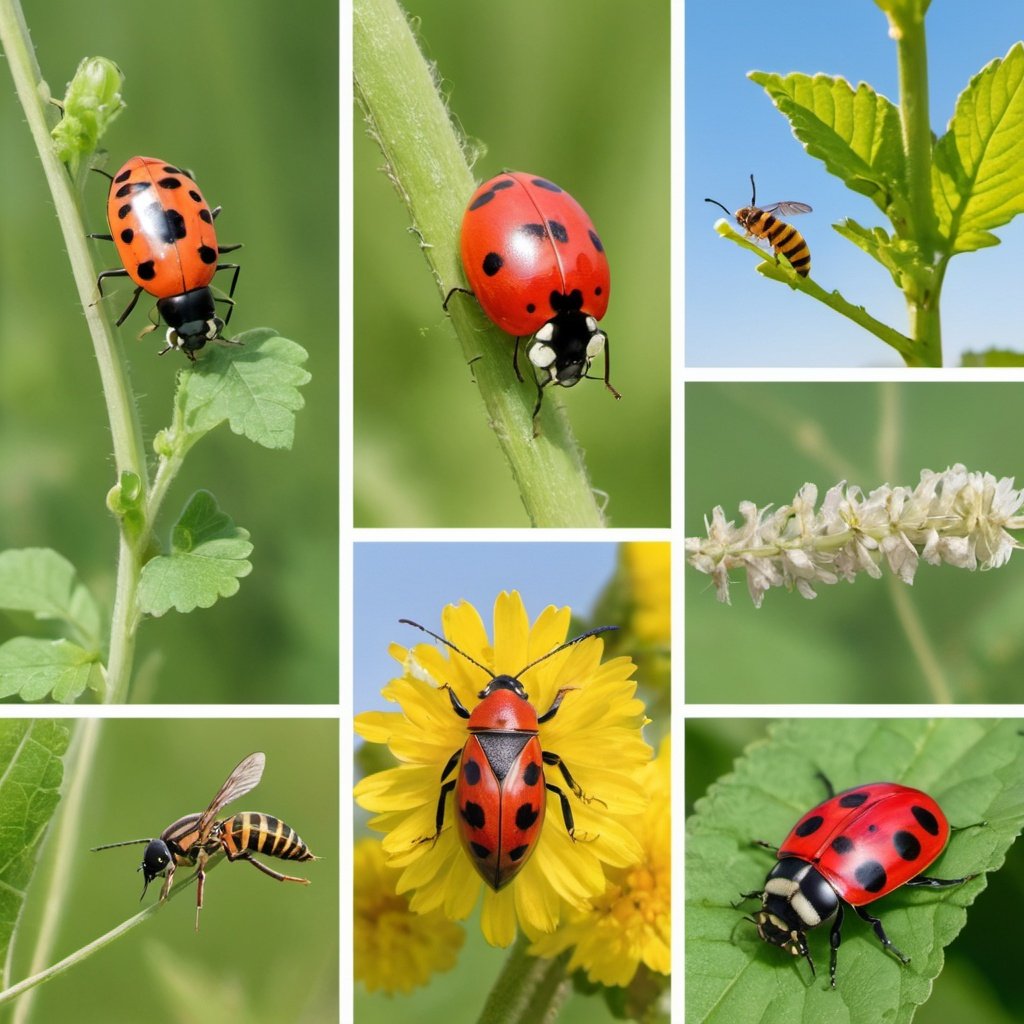
Exploring the Types of Cover Crops Commonly Used in vineyards in Austria
Austria‘s vineyards benefit from a diverse cast of cover crops.
Here’s a closer look at some key players:
- Nitrogen-Fixing Legumes: These champions, like Austrian winter peas, crimson clover, and hairy vetch, excel at nitrogen fixation. They partner with soil bacteria to convert atmospheric nitrogen into a usable form, enriching the soil naturally. Austrian winter peas shine in cold climates and challenging soils, while crimson clover offers rapid growth and impressive nitrogen-fixing abilities for short-term cover cropping. Hairy vetch boasts deep roots that significantly improve soil structure and drainage.
- Erosion-Fighting Grasses: The extensive root system of annual ryegrass and winter rye hold soil particles together, preventing erosion and keeping weeds at bay. They also improve soil aeration and water infiltration by increasing porosity. Annual ryegrass, known for its fast growth, excels in short-term cover cropping. Winter rye, unfazed by cold temperatures, provides year-round soil cover, especially during fallow periods.
Combining Powers for Maximum Impact
Choosing the right cover crop team depends on factors like soil type, climate, and crop rotation.
Legumes are ideal for nitrogen-deficient soils, while grasses excel at erosion control and soil structure improvement.
They can even be mixed for a powerhouse combination. Pairing legumes with grasses provides a double benefit: nitrogen fixation and excellent soil cover.
Finding the Perfect Harmony
Similar to a conductor building a strong orchestra, consulting with agricultural experts or conducting soil tests can help you choose the perfect cover crop ensemble for your Austrian vineyard. This will ensure your soil’s health and ultimately, the quality of your grapes.
Understanding Cover Cropping Practices in Austria
Although I tried simplify things for you (and for me!) in this post, cover cropping isn’t so simple in the vineyard.
It demands thoughtful planning and precise execution.
Seeding and Planting: A Prelude to Soil Renewal
Seeding and planting comes before, in preparation to the new season.
This activity usually happens just after the harvest during fall. The winemaker will then seed and plant legumes usually. Indeed, Austrian winter peas often make their entrance in the fall.
Concerning grasses, such as annual ryegrass, will usually appear in spring or fall, depending on when you want your soil covered.
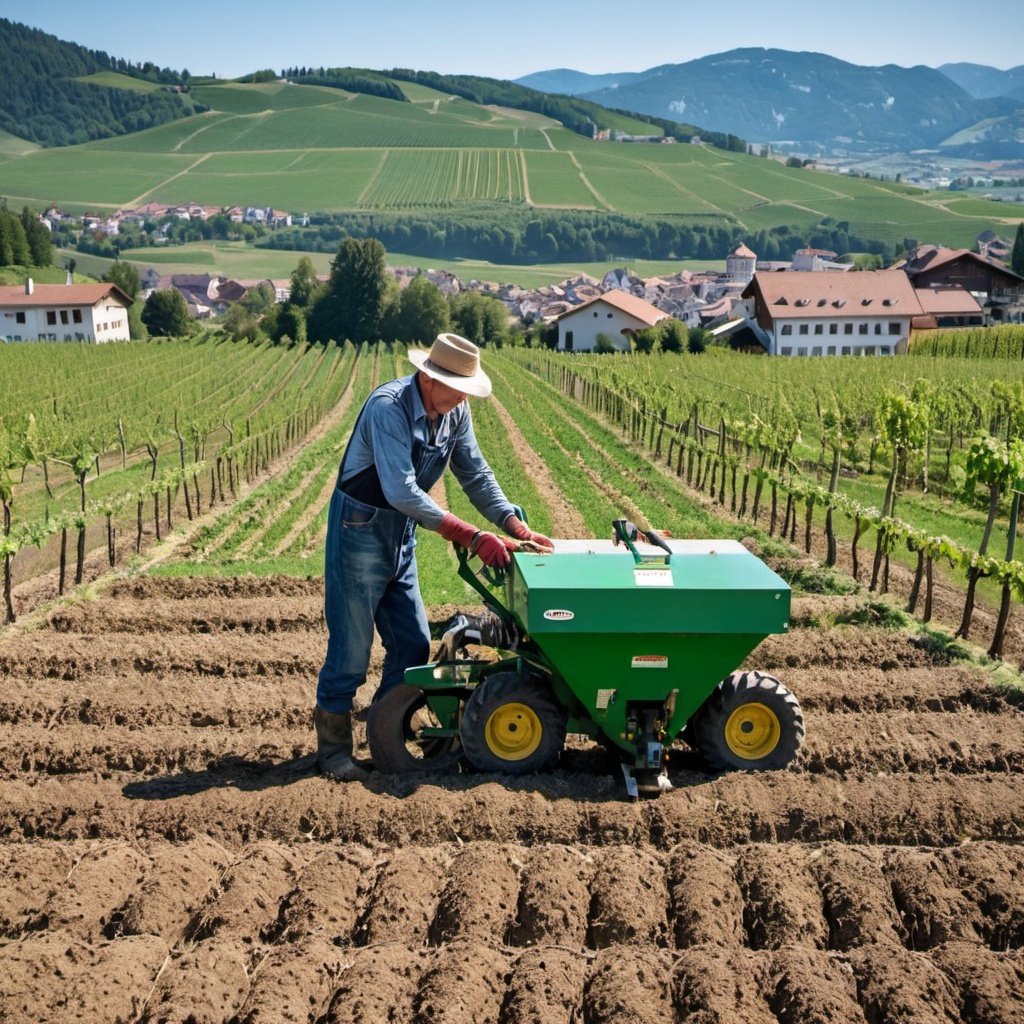
The seeding rate adjusts based on desired plant density and the cover crop’s growth habit.
Several methods can be used for that such as : broadcast, drill, or frost seeding.
Broadcast Seeding:
- Imagine scattering seeds by hand across a field. That’s essentially broadcast seeding. It’s a simple and cost-effective method, often done with a mechanical spreader that throws seeds across the soil surface.
- Pros: Easy to implement, requires minimal equipment.
- Cons: Uneven seed distribution, can lead to wasted seeds and patchy growth. Seeds are more susceptible to bird predation and may not have good soil contact for germination.
Drill Seeding:
- This method uses a seeding machine with rows of hollow tubes that deposit seeds directly into the soil at a specific depth. It ensures better seed-to-soil contact and more uniform distribution compared to broadcasting.
- Pros: More precise seeding depth and distribution, improves seed germination and establishment.
- Cons: Requires specialized equipment, can be more expensive than broadcast seeding. May not be suitable for all cover crop types or uneven terrain.
Frost Seeding:
- This is a unique method that takes advantage of the natural freeze-thaw cycle. Seeds are broadcast onto the soil surface in late fall or winter, when the ground is frozen. As the temperatures fluctuate and the soil thaws, the freeze-thaw action helps work the seeds into the soil profile.
- Pros: Cost-effective, no need for additional tillage, can be done on frozen ground when other methods are impractical.
- Cons: Relies on unpredictable weather conditions, germination rates can be lower than other methods. May not be suitable for all cover crop types or climates.
Choosing the Right Seeding Method
The best seeding method for an (your?) Austrian vineyard will depend on several factors:
- Cover crop type: Some cover crops have specific requirements for seeding depth.
- Soil conditions: Broadcast seeding might be suitable for well-prepared soil, while drill seeding may be better for uneven or compacted soils.
- Time constraints: Broadcast seeding is quicker, while drill seeding might require more preparation.
- Budget: Broadcast seeding is generally cheaper, while drill seeding requires specialized equipment.
For Austrian vineyards, drill seeding might be a good option for many cover crops as it ensures better seed-to-soil contact and establishment, leading to healthier cover crop growth.
However, frost seeding could be a viable alternative during specific times of the year, especially for winter rye or other cold-tolerant cover crops.
Moving from Cover Crop to Cash Crop: Termination and Incorporation
Once the cover crop has served its purpose, it’s time to make way for planting your grapes, the main cash crop.
We need to terminate the cover crop before it starts competing with the grapes for resources like water and nutrients. There are a few different methods for termination:
- Mechanical Mowing or Crimping: These methods physically cut down the cover crop using machinery. This is a quick and efficient way to terminate the cover crop, especially when you need results fast. The leftover plant material (residues) are left on the soil surface.
- Herbicide Application: Herbicides are selective weed killers that can be used to specifically target and terminate the cover crop. This method offers more control over the termination process, but it’s important to choose the right herbicide and apply it carefully to avoid harming the soil or leaving unwanted residues.
After terminating the cover crop, the next step is incorporation. This involves mixing the leftover cover crop residues into the soil. Winmakers use tools like discs, plows, or rollers to achieve this.
Incorporating the residues adds valuable organic matter to the soil, which improves soil health, fertility, and water retention. This ultimately creates a better environment for your grapevines to thrive.
The Final Touches: Timing Incorporation for Your Needs
In cover cropping, timing is crucial. Winemakers have a choice about when to incorporate the leftover cover crop residues (plant material) into the soil.
- Fast Nutrient Release: If you want a quick boost of nutrients for your grapes, you can incorporate the residues immediately after terminating the cover crop. This allows the decomposition process to happen quickly, releasing nutrients back into the soil for the vines to use.
- Extended Soil Cover: Alternatively, you can leave the residues on the soil surface for a while. This provides additional benefits like:
- Erosion Control: The residues act like a natural blanket, helping to prevent wind and rain from washing away precious topsoil.
- Weed Suppression: The residues can also help suppress weeds, reducing the need for herbicides.
The best timing for incorporation depends on the specific cover crop you used and your overall soil management practices.
Plan for Success
If you’re a newbie winemaker, to get the most out of cover cropping, consult with agricultural experts. They can help you choose the right cover crops and termination methods for your vineyard.
Additionally, conducting soil tests can provide valuable information about your soil’s nutrient needs, which can help you decide on the best timing for incorporation.
By following these steps, you can create a successful cover cropping strategy that leaves your soil healthy and vibrant, ultimately leading to better quality grapes.
Local Case Study on Power of Cover Cropping in Austria
While cover cropping offers a promising path towards sustainable viticulture in Austria, a recent case study by Jo Marie Reiff , Sebastian Kolb, Martin H Entling, Thomas Herndl, Stefan Möth, Andreas Walzer, Matthias Kropf, Christoph Hoffmann, Silvia Winter (Organic Farming and Cover-Crop Management Reduce Pest Predation in Austrian Vineyards – PubMed (nih.gov)) reminds us of the importance of local research.
This study compared organic and integrated vineyard management practices, along with the diversity of cover crops, to assess their impact on natural pest control. The researchers found that organic farming and cover crops with low species diversity resulted in a slight decrease (around 10%) in predation rates for a specific grapevine pest stage.
Interestingly, the study identified earwigs, bush crickets, and ants as the primary predators in these vineyards.
These findings suggest that organic viticulture in Austria might have unintended consequences for pest control, possibly due to the use of sulfur and copper fungicides, which can harm beneficial predators alongside targeted pests. It’s important to note that the study acknowledges the limitations of its findings.
While the observed decrease in predation might not have a major practical impact, it highlights the need for further research to refine sustainable practices for Austrian vineyards.
This reinforces the idea that cover cropping can be a valuable tool for Austrian vintners, but tailoring cover crop selection and overall vineyard management practices to the specific region and grape varieties is crucial to maximize the benefits for both the grapes and the surrounding ecosystem.
Conclusion: Embracing Cover Cropping in vineyards for a Sustainable Future
So what should you remember?
First, cover crops in vineyards are nature’s guardians for your wine! They shield the soil from erosion caused by wind and rain, which can wash away precious topsoil and harm future harvests.
Second, cover crops act like a natural fertilizer factory by capturing nitrogen from the air and storing it in the soil. This reduces reliance on chemical fertilizers, making winemaking more sustainable and eco-friendly.
Third, cover crops are the ultimate weed-blockers! They create a thick living blanket that shades the soil and makes it difficult for weeds to thrive. This not only reduces the need for herbicides but also keeps the vineyard healthy without environmental harm.
Last, a healthy vineyard isn’t just about the grapes. Cover crops are a haven for helpful insects and pollinators like bees and butterflies, ensuring proper vine pollination and leading to more and better grapes. They also attract good guys like ladybugs and lacewings – natural pest controllers that keep harmful bugs away from the vines. By encouraging biodiversity, cover crops promote pollination, keep pests in check, and create a more sustainable future for delicious Austrian wines.
So looking for these delicious organic wines that prioritize healthy soil and sustainable practices? My recommendation is Organic Wine Exchange.




